5 Best Ways to Increase Your GLP-1 Naturally for Weight Loss, Doctors Say

According to a 2024 poll conducted by the Kaiser Family Foundation, 22 percent of people who a doctor has told that they are overweight or obese within the last five years have tried taking weight loss medication. Among the remaining 78 percent are plenty of people for whom weight loss medications may not be a good fit. However, doctors say that several alternatives can mimic these drugs’ weight-loss effects by increasing your GLP-1 hormone naturally.
RELATED: 10 Simple Ways to Quiet “Food Noise” Without Taking Ozempic, Dietitians Say.
What exactly is GLP-1, and what are GLP-1 receptor agonist medications?

Medications known as GLP1-RAs are short for glucagon-like peptide 1 receptor agonists—the newest class of weight loss drugs, originally designed to treat Type 2 diabetes.
“These medications, such as semaglutide and liraglutide, work by mimicking the action of the natural GLP-1 hormone, which is released in the gut after eating,” explains Tim Spector, MD, a professor of genetic epidemiology and the scientific co-founder of ZOE.
Studies have shown that people taking GLP1-RAs can lose an average of 10 to 15 percent of their body weight.
“These medications enhance insulin secretion in response to meals, reduce glucagon production (which helps prevent the liver from releasing too much sugar), and slow gastric emptying, leading to reduced appetite. In short, they help regulate blood sugar levels and reduce hunger, which aids weight loss,” Spector says.
Can non-drug interventions have similar effects?
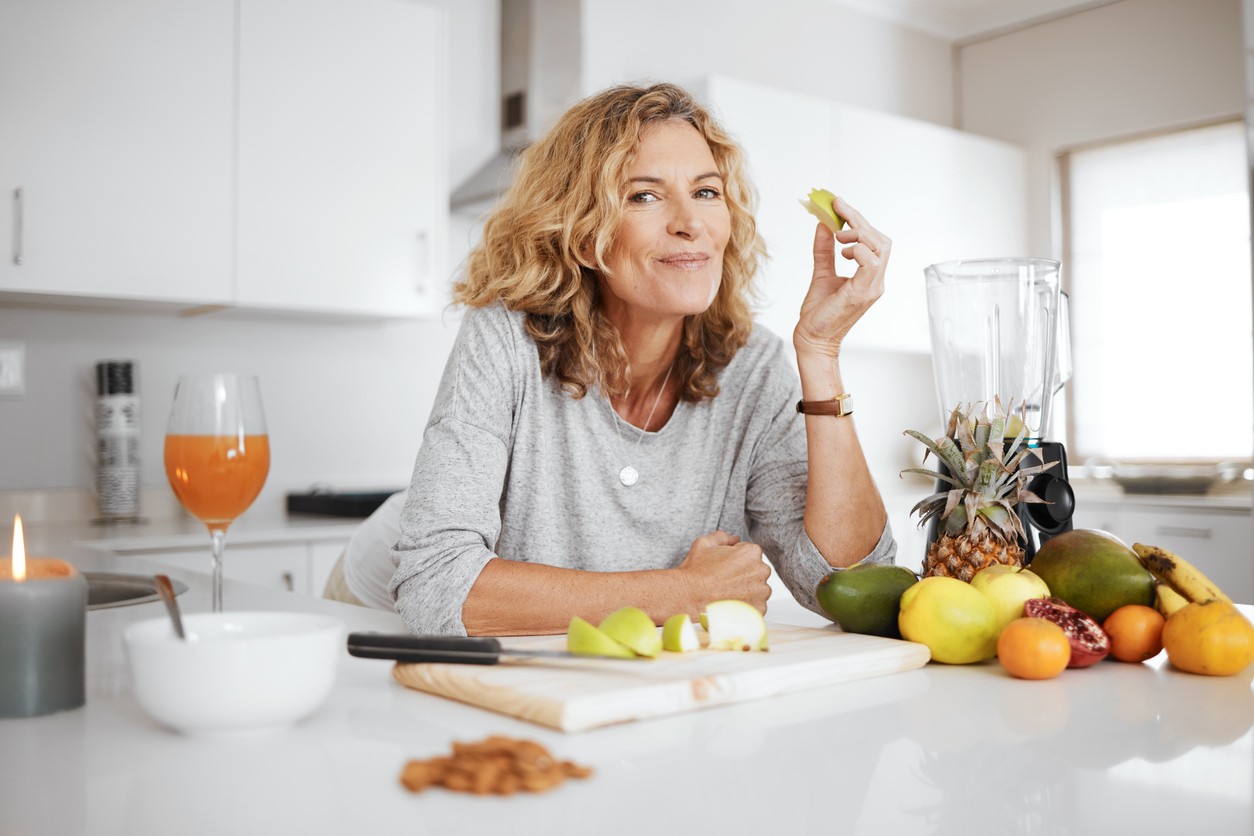
Several reasons might lead someone to decide against taking GLP1-RAs. These include a wide range of potential side effects and high costs, which are often not covered by insurance. However, experts say that natural interventions may be available that can confer similar results.
“Non-drug interventions like diet and exercise can naturally boost GLP-1,” says Spector. “Exercise, especially strength training, also enhances GLP-1 levels and insulin sensitivity, making lifestyle changes a powerful alternative.”
Supriya Rao, MD, a board-certified obesity doctor, gastroenterologist, and director of medical weight loss at Lowell General Hospital and Clinical Assistant Professor at Tufts University School of Medicine, notes that no one food can mimic GLP1-RA drugs; however, “certain foods can support similar outcomes by promoting satiety, stabilizing blood sugar levels and aiding in weight management.”
That said, here are the five best ways to increase your GLP-1 naturally.
RELATED: This Food Can Trigger a 15% BMI Weight Loss—But You’re Probably Not Eating It.
3
Eat a wide range of plants every week.
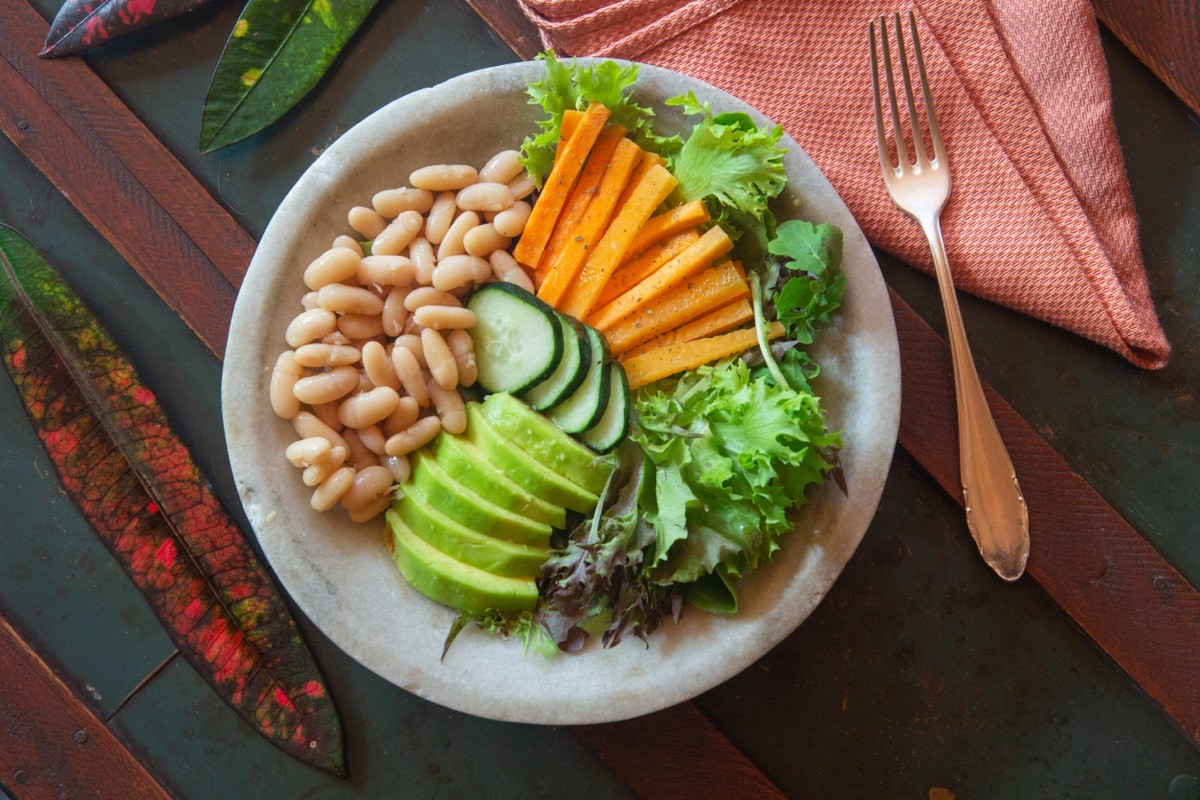
One of the best ways to reproduce the benefits of GLP-1 medications is to promote a healthy gut microbiome.
“Research shows that a healthy microbiome is linked to better metabolic health, blood sugar regulation, and appetite control. By focusing on variety, you optimize your gut health, which in turn supports overall metabolic health,” Spector says.
In particular, he recommends eating 30 or more different types of plants per week as a top way to naturally boost GLP-1.
“A plant-rich diet provides a wide range of fibers, antioxidants, and polyphenols that nourish your gut microbiome. This diversity supports the growth of beneficial bacteria, which can trigger GLP-1 release,” he explains.
4
Focus on fiber.
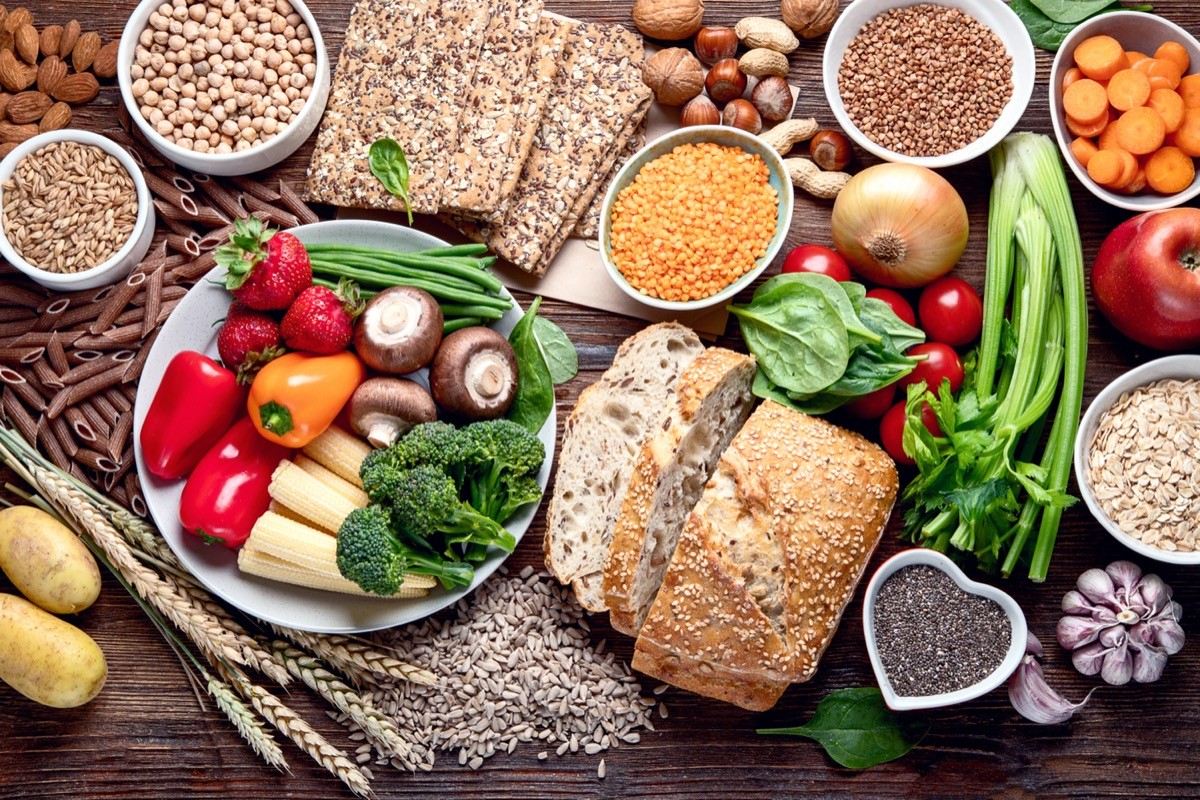
Eating fiber-rich food is another way to experience some of the same benefits of GLP-1 medications.
“Fiber-rich foods, especially soluble fiber found in oats, beans, lentils, and vegetables, have a direct impact on GLP-1 secretion. Soluble fiber slows down digestion, which helps to stabilize blood sugar and keep you feeling full longer. This not only helps control appetite but also supports the release of GLP-1.” Spector explains.
“By incorporating more fiber into your meals, you create a slow, steady release of energy, helping you maintain healthy blood sugar levels and reduce cravings,” he adds.
RELATED: Akkermansia Is Being Called a Game-Changer for Weight Loss.
5
Include protein in every meal.
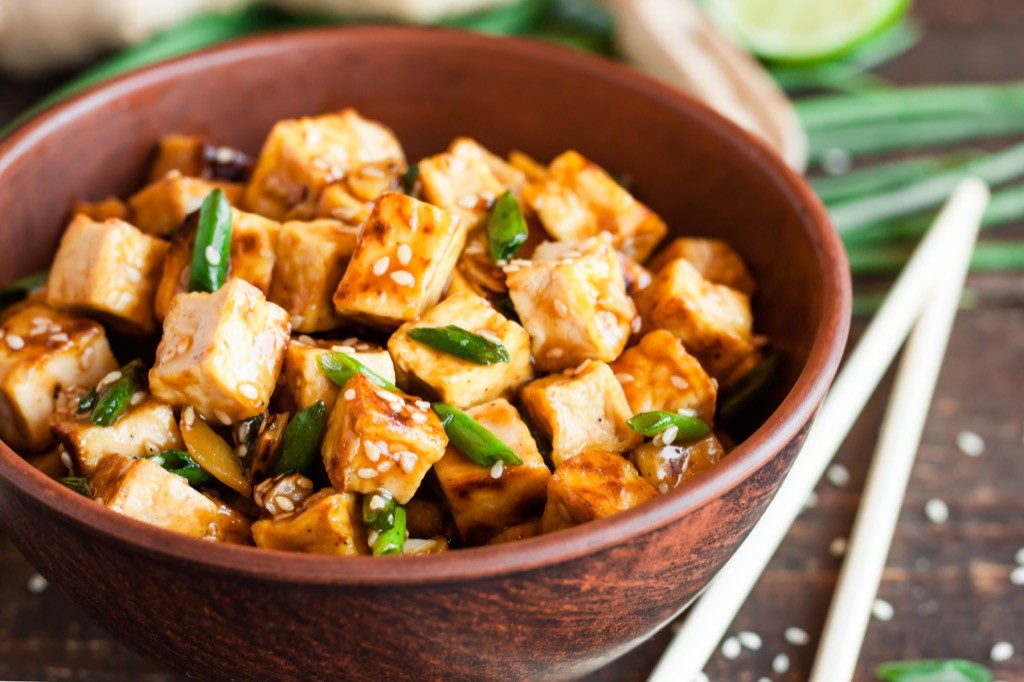
Eating protein with every meal is essential for boosting GLP-1 and supporting metabolism.
“Protein stimulates GLP-1 release more effectively than carbohydrates or fats, helping you feel full and satisfied longer,” Spector shares. “However, focusing on good quality protein is also important; for instance, lentils, chickpeas, black beans, quinoa, tofu, tempeh, and edamame are great protein sources.”
Incorporating a variety of plant proteins into your meals also ensures you’re getting a broad range of amino acids—a key to overall health and muscle repair. “As an extra bonus, they’re also rich in fiber and other important compounds that your gut microbiome will love,” Spector notes.
6
Eat more healthy fats.

It may sound counterintuitive, but if you want to lose fat, it’s important to eat fat. The key is to eat healthy, monounsaturated fats rather than those that are high in saturated fat.
“Healthy fats from sources like avocados, nuts, and olive oil can support overall metabolic health,” says Rao.
7
Swap processed foods for nutrient-dense ingredients.

Rao also recommends reducing your intake of processed foods. She explains that meals with highly processed ingredients tend to contain more calories, fat, and sugar and fewer nutrients—a combination that can leave you craving more.
Besides eating plenty of plant-based foods that are rich in fiber, protein, and healthy fats, Rao suggests packing your diet with vitamins and minerals. “This can support you in your weight loss journey because you can actually eat more and still have a lower caloric intake. At the same time, your body gets all the nutrients it needs,” she says.
Asked what she recommends, Rao says there are plenty of options to choose from.
“Eat foods like soups, smoothies, nourishing bowls, salads, curries, oatmeal, and chia pudding. These are great high-fiber foods that are high in nutrients and stabilize blood sugar levels. They can also prevent cravings and are easy on your gut,” the obesity specialist says.
RELATED: Certain Foods Trigger Natural Ozempic-Like Weight Loss Effect, Doctor Says.
Should you take GLP-1 medications or try natural interventions instead?
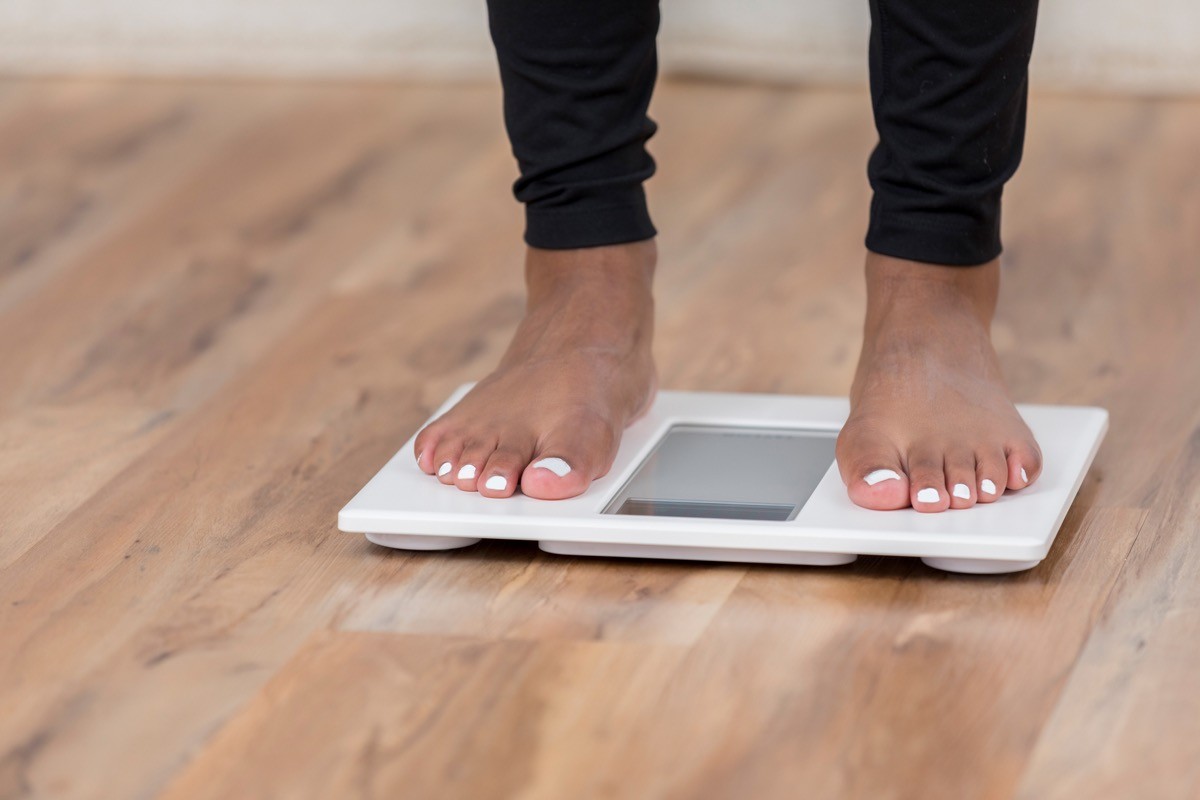
The experts emphasize that the first step in choosing between GLP-1 medications and lifestyle interventions is to broach the topic with your doctor. They can help you assess your health and weight loss goals and weigh the risks and benefits of both approaches.
However, Spector notes that patients for whom medication is not a fit may still see results with natural interventions.
“While GLP-1 medications work quickly, dietary and lifestyle changes offer long-term benefits by addressing the root causes of metabolic issues. Consistency is key—an overall healthy diet and regular exercise are essential for sustained health. By focusing on whole, plant-based, fiber-rich foods and exercise, you can naturally boost GLP-1 and improve overall health,” the doctor says.
It’s also important to note that people taking GLP-1 medications will not necessarily change their lifestyle habits as part of their weight loss plan. Speak with your doctor to learn more about how you can manage your weight for optimal health.